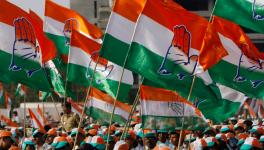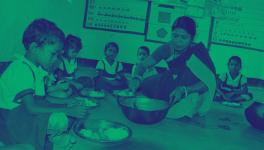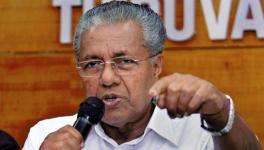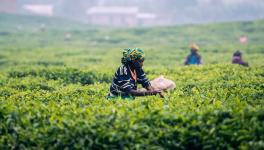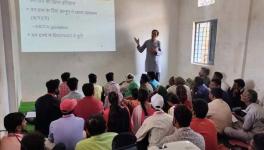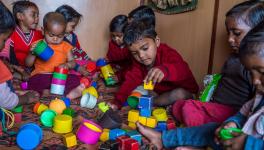Organised Marginalisation
How malnutrition and death have gripped the tribals of Attappadi in Kerala after land alienation in 1996. Neha Dixit reports.
Last month, E. K. Bhushan, Kerala Chief Secretary informed the tribal people of Attappadi Hills that they are now entitled to restore 530 hectares of land in the area. This is out of the roughly 4370 hectares of land that was alienated from the tribals after the Tribal Land Amendment Act was passed in 1996.
Attappadi block is one of the largest tribal settlements of Kerala in south India and is part of the Palakkad district. This area has seen 70 malnutrition deaths in the last one year.
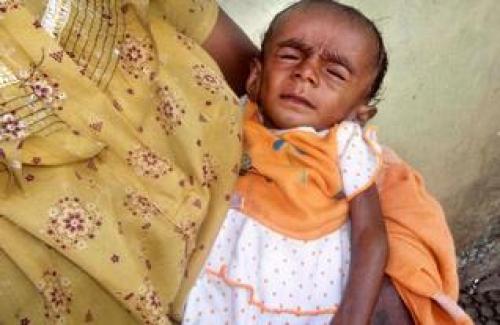
According to the Comptroller and Auditor General (CAG) report on general and social sector for the year 2012, malnutrition among children, below the age of six stood at 27-39 per cent in Kerala. These figures are higher than Karnataka and Andhra Pradesh. The report stated that 110 out of 1,180 children, who died during the year, were severely malnourished. The highest numbers of deaths were recorded in Attappadi, an area inhabited by distinct tribal communities like the Irulas, the Mudugas and Kurumbas.
The loss of land is directly responsible for the high malnutrition in the area. In early 1960s, part of the forest land in Attappadi was taken away by migrant farmers in Tamil Nadu and southern parts of Kerala. A large number of trees were anyway cut down by the British to exploit timber wealth. This is when the marginalization of the tribals begun in this area. Tribals, dependent on the forest produce for survival, not only lost their means of livelihood but also lost any kind of food security.
There is an alarming fall in the population of Attappadi tribals due to declining birth rates and life expectancy and influx of settlers. Studies indicate that even when the population of Attappadi has been increasing at the rate of 5.71 per cent annually since 1951, the tribal population grew only by a moderate 2.36 per cent when the settler population rose sharply at the rate of 11.8 per cent. In 1961, after the land alienation, the settler population increased eight times. The 2011 figures show the tribal population at 29,059 as against the settler population of 38,000, almost equal.
With the influx of settlers and lack of traditional agriculture because of the alienation of forest land, the cultivation patterns changed. While the tribals originally cultivated Ragi, Cholam, Thina, Mustard, Kambu, Varagu, Pandi, Thuvara, the homogenous Public Distribution System completely changed the staple crops. Cotton, ground nut, rice, plantain, tapioca, coconut, tea, coffee, pepper and ginger replaced the agriculture system of the tribals. The change in staple diet and its lack of availability has shot up the number of anaemia cases.
“My nine months old daughter died. She had a swollen belly like my three year old son. He too has feeble legs and cannot stand on his feet,” says Matharu. Last week, he embraced Christianity. “The missionary people at least provide me and my family of six, two square meals. With no means to earn money, this is the only option,” he says in a matter of fact tone. This is the latest trend in the area.
With no access to tribal land, the only alternative for eradicating malnutrition are the ICDS Centres. The landscape of Attappadi and the location of ICDS centres are also a stark reminder of the grave indifference in the way they were planned. The ICDS centre in the area is situated at the top of the terrain. “We have to carry a sack of 50 kg of rice for supplementary nutrition to the centre on our own,” tells Surabhi, an anganwadi centre in the Kurumba area. Which is why, the food is supplied here once a month.
To add to this, 29 anganwadi centres in the operational area have no drinking water facilities, 25 do not have electricity connection and 27 do not have toilet facilities. This is reason enough why most of the anganwadi centers are non-functional in the region. The marginalization of the tribals is further evident in the fact that while anganwadis in other parts of Kerala supplied milk, egg, and banana to pregnant women and children, in Attappadi wheat, upma and green gram is distributed. In the light of the malnutrition deaths, this May, a Special Health Package for Attappadi, was announced by the state which promised to provide milk, egg, and banana through anganwadis. However, no funds were provided for it. Usha, the elected head of the Attappadi block, informs, “The government has asked the anganwadi teachers to buy the nutritious food from their own money and submit the bills instead of providing funds to buy the required items.” Evidently, the anganwadi workers, afraid of the bureaucratic procedures to get back their money, are not buying the required items.
With the completion of several government projects, work under NREGA has also been sparse. For the last eight months, no one from Attappadi block got any employment under the employment scheme. With lack of food and intervention form the state, the religious groups see optimum opportunity to convert the tribals. “In the last one year, 2000 tribals have converted to Christianity in the Dundoor hamlet”, informs Sindhu, a Muduga community member.
Attappadi has become the curious case of homogenization and marginalization. It weaves how displacement, religion and a fractured infrastructure of the state lead to malnutrition and death.
(This story is one of the six-part series on malnutrition. It has been facilitated under the One World-POSHAN fellowship grant.)
Others in the series:
http://newsclick.in/india/racing-rats-or-racing-food
http://newsclick.in/india/when-patriarchy-scheme-conquer-malnutrition
Disclaimer: The views expressed in this article are those of the author, and do not necessarily represent the views of Newsclick.
Get the latest reports & analysis with people's perspective on Protests, movements & deep analytical videos, discussions of the current affairs in your Telegram app. Subscribe to NewsClick's Telegram channel & get Real-Time updates on stories, as they get published on our website.











